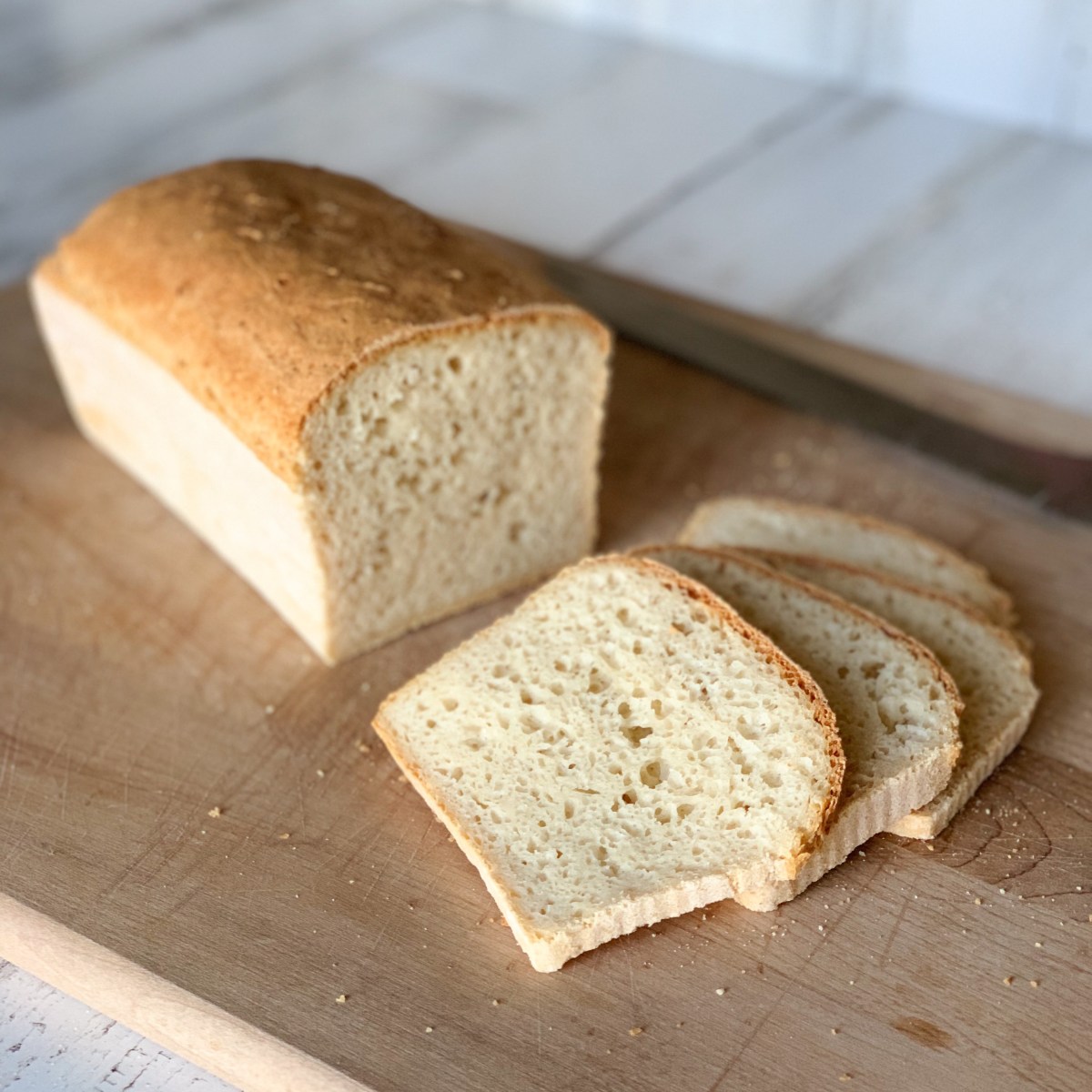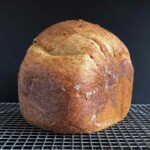Imagine sinking your teeth into a perfectly golden-brown slice of gluten-free bread, its crumb unbelievably soft and fluffy, a delightful contrast to the often dense and dry alternatives. This isn’t a dream; it’s the promise of this recipe, a journey into crafting the perfect gluten-free sandwich bread that rivals its gluten-containing counterpart. We’ll explore various gluten-free flour blends, each imparting unique textures and flavors, guiding you through a step-by-step baking process that ensures a consistently light and airy result. Prepare to be amazed by the possibilities of gluten-free baking!
From mastering the art of mixing and proofing to troubleshooting common gluten-free baking pitfalls, this comprehensive guide provides everything you need to create a loaf that’s not just gluten-free, but truly exceptional. We’ll delve into ingredient substitutions, offering alternatives for various dietary needs, and share creative serving suggestions to inspire your culinary adventures. Get ready to elevate your gluten-free baking to a whole new level of deliciousness.
Step-by-Step Baking Process

Creating this soft and fluffy gluten-free sandwich bread requires careful attention to detail at each stage. The following steps ensure a light and airy loaf, perfect for your favorite fillings. Precise measurements and gentle handling are key to success.
Ingredient Preparation and Mixing
Before beginning the baking process, ensure all ingredients are at room temperature. This allows for even mixing and a smoother batter. Begin by whisking together the dry ingredients: gluten-free flour blend, xanthan gum (if not already included in your flour blend), baking powder, and salt. In a separate bowl, whisk together the wet ingredients: eggs, oil (such as olive oil or melted coconut oil), milk (dairy or non-dairy), and sugar. Gradually add the wet ingredients to the dry ingredients, mixing gently with a spatula or wooden spoon until just combined. Overmixing develops gluten in gluten-free flours, leading to a tough bread. The batter should be slightly thick, but still pourable.
Pouring and Baking
Gently pour the batter into a greased and floured 9×5 inch loaf pan. Tap the pan lightly on the counter to remove any large air bubbles. The batter will fill the pan about halfway. Bake in a preheated oven at 350°F (175°C) for approximately 50-60 minutes. Check for doneness by inserting a toothpick into the center; it should come out clean or with just a few moist crumbs attached.
Visual Indicators of Doneness
As the bread bakes, observe its transformation. Initially, the batter will be a pale, slightly wet-looking mixture. As it bakes, the top will begin to rise and brown gently. After about 30 minutes, a beautiful golden-brown crust will start to develop. After 45 minutes, the bread will have a noticeably risen dome and a deep golden-brown color. The toothpick test, as mentioned above, remains the ultimate indicator. If the toothpick comes out completely clean, the bread is fully baked. If it has a few moist crumbs attached, it needs a few more minutes. Overbaked bread will be dry and crumbly.
Cooling and Storage
Once baked, carefully remove the bread from the oven and let it cool in the pan for 10 minutes before transferring it to a wire rack to cool completely. This prevents the bottom from becoming soggy. Allow at least 30 minutes for complete cooling before slicing and serving. Store leftover bread in an airtight container at room temperature for up to 3 days, or freeze for longer storage. Freezing preserves the freshness and texture remarkably well.
Ingredient Substitutions and Alternatives
This section explores the versatility of our soft and fluffy gluten-free sandwich bread recipe by examining alternative ingredients and their impact on the final product. Understanding these substitutions allows for customization based on dietary needs, ingredient availability, and desired texture. We’ll delve into replacements for eggs, oil, and leavening agents, as well as discuss the nuances of using different gluten-free baking powders and yeasts.
Egg Substitutions
Eggs play a crucial role in binding ingredients and adding richness to baked goods. However, several alternatives can achieve similar results. Flax eggs (1 tablespoon ground flaxseed meal mixed with 3 tablespoons water) or chia eggs (using the same ratio of chia seeds and water) offer a vegan option, providing binding properties similar to eggs. Mashed banana (about 1/4 cup per egg) adds moisture and sweetness, subtly altering the flavor profile. Applesauce (1/4 cup per egg) also contributes moisture and a slightly sweeter taste, resulting in a slightly denser loaf. The choice depends on personal preference and desired flavor outcome. Flax and chia eggs will yield a bread closest to the original recipe in texture, while banana and applesauce will result in a slightly moister, sweeter loaf.
Oil Substitutions
The oil in the recipe contributes moisture and tenderness. Unsweetened applesauce can replace oil in a 1:1 ratio, resulting in a slightly denser but still moist bread with a subtle sweetness. Melted coconut oil provides a distinct coconut flavor and a slightly firmer crumb, while melted butter imparts a rich, buttery taste and a slightly softer texture. The choice of oil substitute will influence both the flavor and texture of the final product. Applesauce will provide a more neutral flavor profile, while coconut oil and butter will add distinct characteristics.
Leavening Agent Substitutions
This recipe uses a combination of gluten-free baking powder and xanthan gum for lift and structure. While substituting one for the other isn’t directly recommended due to their differing functionalities, you can explore variations within each category. Different gluten-free baking powders may contain varying proportions of leavening agents (e.g., sodium bicarbonate and sodium aluminum phosphate), impacting the rise and overall texture. A baking powder with a higher proportion of sodium bicarbonate might result in a slightly more alkaline taste and potentially a slightly browner crust. Experimentation with different brands is key to finding your preferred result. Similarly, using a different type of xanthan gum (though less common) could subtly alter the texture, though the difference is likely to be minimal.
Impact of Different Gluten-Free Baking Powders and Yeasts
The choice of gluten-free baking powder significantly influences the bread’s rise and texture. Baking powders with different ratios of acid and base components will result in varied levels of lift and potential aftertastes. Some gluten-free baking powders may produce a slightly more crumbly texture than others. Similarly, if using yeast (which is not specified in the original recipe but could be adapted), the type of yeast and its activation method will impact the final rise and flavor. Active dry yeast, instant yeast, and fresh yeast all behave differently, requiring different hydration and activation times. Using a different yeast may lead to a bread with a more pronounced yeasty flavor and a potentially different crumb structure.
Adjusting for Specific Dietary Needs
Adapting the recipe for vegan diets is straightforward by replacing eggs with flax or chia eggs and using a vegan butter or oil substitute. For nut allergies, ensure all ingredients are nut-free and avoid cross-contamination during preparation. Many gluten-free baking powders and xanthan gums are nut-free, but always check the labels. If soy is a concern, verify that the xanthan gum and any other ingredients are soy-free. Careful ingredient selection is key to ensuring the recipe caters to individual dietary restrictions. Always double-check ingredient labels to confirm the absence of allergens.
Troubleshooting Common Gluten-Free Baking Issues
Gluten-free baking presents unique challenges compared to traditional baking. The absence of gluten, the protein responsible for elasticity and structure in wheat flour, necessitates careful attention to ingredients and technique to achieve a soft, fluffy loaf. Understanding common problems and their solutions is key to successful gluten-free bread making.
Crumbly Texture
A crumbly texture is a frequent issue in gluten-free bread. This often stems from insufficient binding agents or an imbalance of ingredients. The lack of gluten’s cohesive properties means other ingredients must work harder to create a unified structure.
- Insufficient Binding Agents: Ensure you’re using enough xanthan gum, guar gum, or psyllium husk powder. These are crucial for mimicking gluten’s binding action. Start with the recommended amount in your recipe, and if necessary, gradually increase it by a teaspoon at a time until you achieve a more cohesive dough. Too little results in a crumbly loaf, while too much can lead to a gummy texture.
- Incorrect Liquid Ratio: The liquid content directly affects the texture. Too little liquid can result in a dry, crumbly loaf. Conversely, too much can create a gummy texture. Carefully measure liquids, and if needed, adjust the amount slightly based on the consistency of your dough. A slightly sticky dough is preferable to a dry one.
- Over-mixing: Over-mixing develops excessive gluten-free flour proteins, making the bread tougher and more crumbly. Mix until just combined, being careful not to overwork the dough.
Dense Loaf
A dense, heavy gluten-free loaf often signals problems with leavening or ingredient ratios. Gluten-free bread relies heavily on the proper functioning of chemical leaveners or yeast to achieve a light and airy texture.
- Inactive Leavening Agents: Check the expiration dates of your baking powder or baking soda. Old leavening agents will lose their potency, leading to poor rise and a dense loaf. Using fresh leaveners is crucial for a successful outcome.
- Insufficient Leavening Agents: Insufficient leavening agents will similarly lead to poor rise. Double-check your recipe and ensure you’ve added the correct amount. A slightly increased amount might be necessary depending on the specific gluten-free flour blend used.
- Over-baking: Over-baking can dry out the bread and make it denser. Use a reliable oven thermometer to ensure accurate temperature, and check for doneness earlier than you might with wheat bread.
Poor Rise
A bread that doesn’t rise sufficiently often points to issues with leavening, ingredient ratios, or even oven temperature. A lack of adequate rise results in a flat, compact loaf.
- Improper Mixing Technique: For yeast-based gluten-free breads, proper mixing is crucial to activate the yeast and incorporate air into the dough. Under-mixing will not activate the yeast effectively, resulting in a poor rise.
- Incorrect Oven Temperature: A consistently too-low oven temperature will significantly hamper rising. A properly calibrated oven is crucial for consistent baking results. Consider using an oven thermometer to ensure accuracy.
- Stale Ingredients: Using stale gluten-free flour or other ingredients can affect the final rise of your bread. Always check the expiration dates and ensure your ingredients are fresh.
Adjusting Baking Time and Temperature
Baking time and temperature adjustments are crucial in preventing common gluten-free baking issues. Generally, gluten-free bread requires a slightly lower temperature and potentially a longer baking time compared to wheat bread. Lower temperatures prevent burning the exterior before the inside is cooked through, while longer times allow for adequate rising and moisture distribution. Start with the recommended baking time, and check for doneness early by inserting a toothpick into the center – it should come out with a few moist crumbs attached, not completely clean. If the top is browning too quickly, tent it with foil. If the interior is still doughy, extend the baking time by 5-10 minutes at a time, checking frequently.
Gluten-Free Bread Baking Troubleshooting Flowchart
Imagine a flowchart with the following steps:
Start -> Is the bread crumbly? Yes -> Check binding agents, liquid ratio, and mixing. No -> Is the bread dense? Yes -> Check leavening agents, oven temperature, and baking time. No -> Is the rise poor? Yes -> Check yeast activation (if applicable), oven temperature, and ingredient freshness. No -> Bread is successful!
Each “Yes” branch leads to a detailed explanation of the potential causes and solutions as discussed above. The flowchart visually guides the baker through a logical process of identifying and resolving issues.
With this recipe, the seemingly impossible task of achieving soft and fluffy gluten-free sandwich bread becomes a delightful reality. By understanding the nuances of different gluten-free flour blends and mastering the essential baking techniques, you’ll unlock the secret to consistently producing a loaf that’s both delicious and satisfying. So, gather your ingredients, embrace the process, and prepare to savor the rewarding taste of success – a perfectly crafted gluten-free sandwich bread that will redefine your expectations.
Popular Questions
Can I use a bread machine for this recipe?
While the recipe is designed for conventional oven baking, you can adapt it for a bread machine. Refer to your bread machine’s manual for specific instructions and adjustments to the liquid and kneading time.
How long does the bread stay fresh?
Properly stored in an airtight container at room temperature, the bread will stay fresh for 3-4 days. Freezing extends its shelf life significantly.
What if my bread is too crumbly?
Crumbly bread often indicates insufficient moisture. Try adding a tablespoon or two more of liquid next time, or ensure your gluten-free flour blend is well-combined.
Can I make this recipe without eggs?
Yes, you can substitute eggs with flax eggs (1 tablespoon flaxseed meal mixed with 3 tablespoons water per egg) or applesauce for a vegan option. The texture might be slightly altered.


